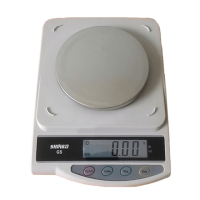Why is the display unstable on my Shinko CUX II Scales?
- EeheathJul 31, 2025
If your Shinko Scales display is unstable, it could be due to several factors. First, check the location of the scales to ensure they are not affected by wind or oscillation, and adjust the response speed if necessary. Also, verify that the installation base is stable. Finally, make sure that the weighing pan or tare isn't touching anything.

